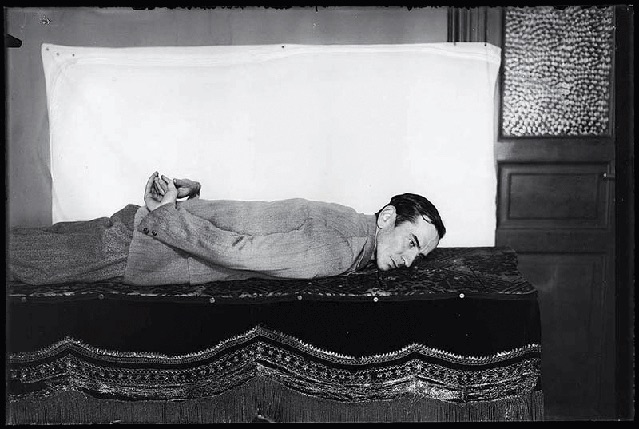
flashbak.com
Martin Munkacsi And The Decapitated Magician, Budapest, 1928
In 1928, Martin Munkácsi (born Mermelstein Márton; 18 May 1896 – 13 July 1963) was watching a magician in his native Budapest. The magician, possibly associated with Chevalier Ernst Thorn, demonstrated his trick in which he appears to be decapitated yet alive. To help set the dark and macabre scene, a woman opens a black bag and retrieves a doll.
Martin Munkácsi and the decapitated man
The creepy doll
Martin Munkácsi – the hand and the Automaton, 1928
In his day Munkacsi (1898-1963) was one of the world’s most famous photographers in the world. Having trained as a sports and news photographer on Hungary, he moved to Berlin in 1928 and to New York City in the early 1930s, just as Hitler was rising to power and persecuting Munkacsi’s fellow Jews.
There he worked for Harper’s Bazaar, using his knowledge of motion photography in fashion by encouraging his models move naturally (often outdoors) instead of posing perfectly still.
His impact on photography was considerable. The great Henri Cartier-Bresson (22 August 1908 – 3 August 2004) wrote of a Munkacsi photograph of three children running to the water at Lake Tanganyika, “I must say that it is that very photograph which was for me the spark that set fire to the fireworks… it made me realise that photography can reach eternity through the moment.” After Munkacsi’s death, the photographer Richard Avedon (May 15, 1923 – October 1, 2004) wrote: “Today the world of what is called fashion is peopled by Munkacsi’s babies, his heirs.”
There are now two dolls in the bag
Martin Munkasci – the magician’s mask
The post Martin Munkacsi And The Decapitated Magician, Budapest, 1928 appeared first on Flashbak.










